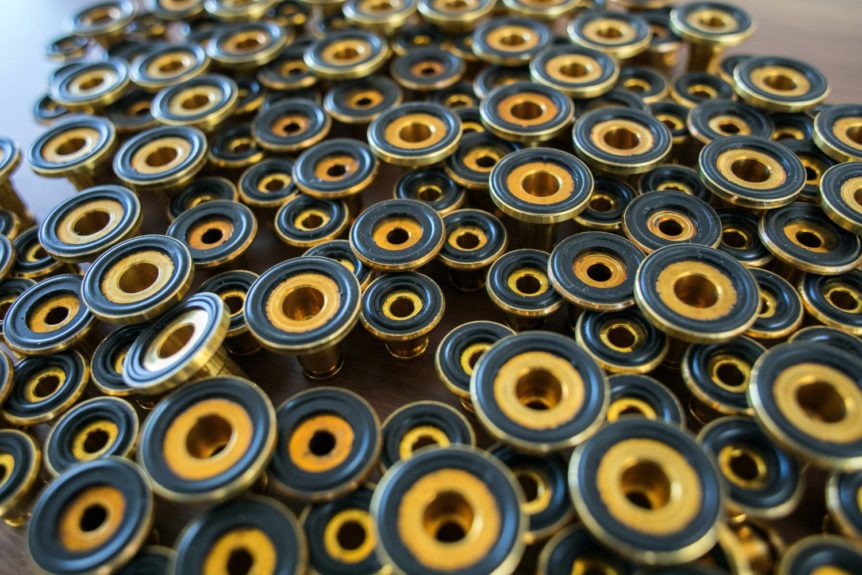Rubber-to-metal bonded assemblies consist of an elastomer that is molded and chemically bonded to a clean metal surface using a specialized adhesive. During the injection, transfer, or compression molding process, rubber vulcanization and adhesive curing occur at the same time. Applications include small vibration mounts and massive railcar suspension components that weigh over 200 lbs.
Chemical bonds can be strong, but rubber-to-metal bonded assemblies should include a mechanical locking mechanism when possible. This metal lock can be encapsulated, such as with rubberized bolt heads. To encapsulate metal with rubber, the substrate needs a through-hole or other feature such as a knob or neck around which rubber can be molded.
For engineers, there’s plenty to think about when it comes to rubber-to-metal bonded assemblies. If the adhesive fails or the rubber doesn’t perform as expected, the part may fail prematurely and require a replacement that can take an asset out of service. Here’s an overview of five design and manufacturing considerations. For more information, or to discuss your specific bonding application, contact us.
#1 Part Design and Application Environment
Part geometry can pose challenges for rubber-to-metal bonded assemblies. Because the rubber that fills the mold has a low viscosity, there’s a risk that complex parts could be coated inadequately or inconsistently. The cured adhesive could also face attack if the rubber-to-metal interface is exposed to a confined fluid such as a hot glycol/water mixture. It’s also important to choose an elastomer that provides the type of environmental resistance that you need.
#2 Elastomer (Rubber)
Some elastomers are easier to bond because of their higher polarity, higher levels of unsaturation, and the type and amount of filler materials. Compounds with clays and silicas are generally easier to bond while compounds that contain little to no sulfur, or that have less than 40 parts per hundred of carbon black, are usually more difficult to bond. This resource from Parker LORD provides additional information.
#3 Metal and Surface Preparation
Rubber-to-metal bonded assemblies can use different types of steel, brass, and aluminum. Because lead chemically counteracts rubber bonding, metals with the lowest levels of lead are easier to bond. Preparing the metal’s surface is important, too. Rust, processing oil, and lubricants all interfere with bonding. To withstand harsh environments, the metal substrate may require chemical treatment.
#4 Coating System
Choosing the right coating system is critical. Most use a two-coat system with a primer and a topcoat; however, some one-component products are also available. Coating systems also vary in terms of chemistry with categories that include aqueous, hybrid, and solvent base. Preparing the primer and adhesive are key, but so is applying them in a way that optimizes the adhesive’s dry film thickness.
#5 Molding Process
No matter which rubber molding process is used, molders need to optimize mold pressure, elastomer viscosity, and temperature uniformity for bond strength. Prebake, the heating of coated parts when they’re loaded into the mold cavities, optimizes curing conditions and helps keep the adhesive from being eroded away. Too much heat can lead to premature curing of the adhesive and a poor bond.
For more information about rubber-to-metal bonded assemblies, contact The Rubber Group.

